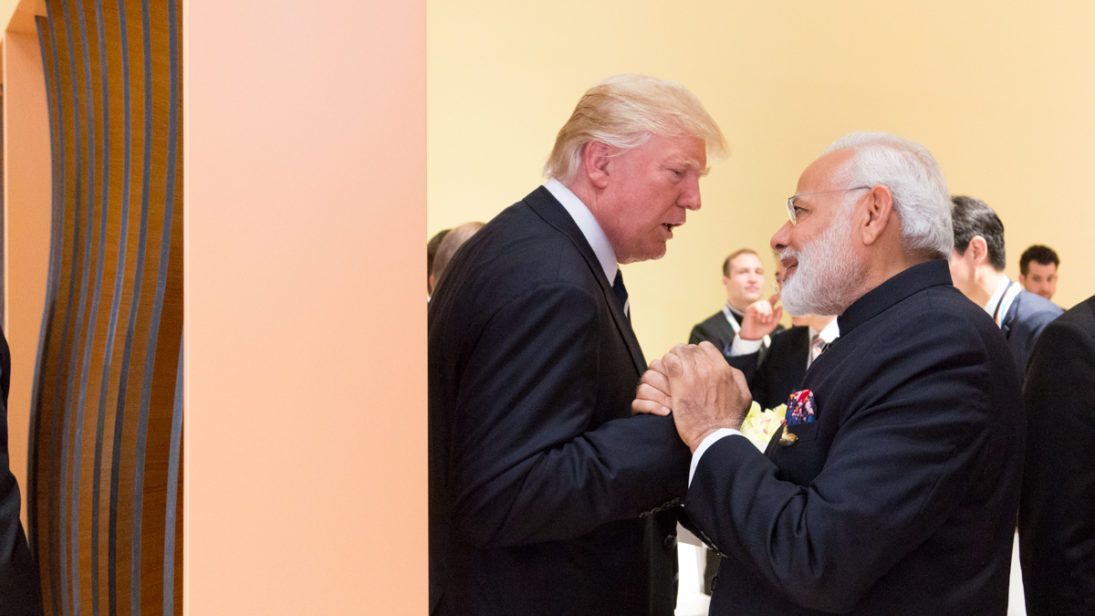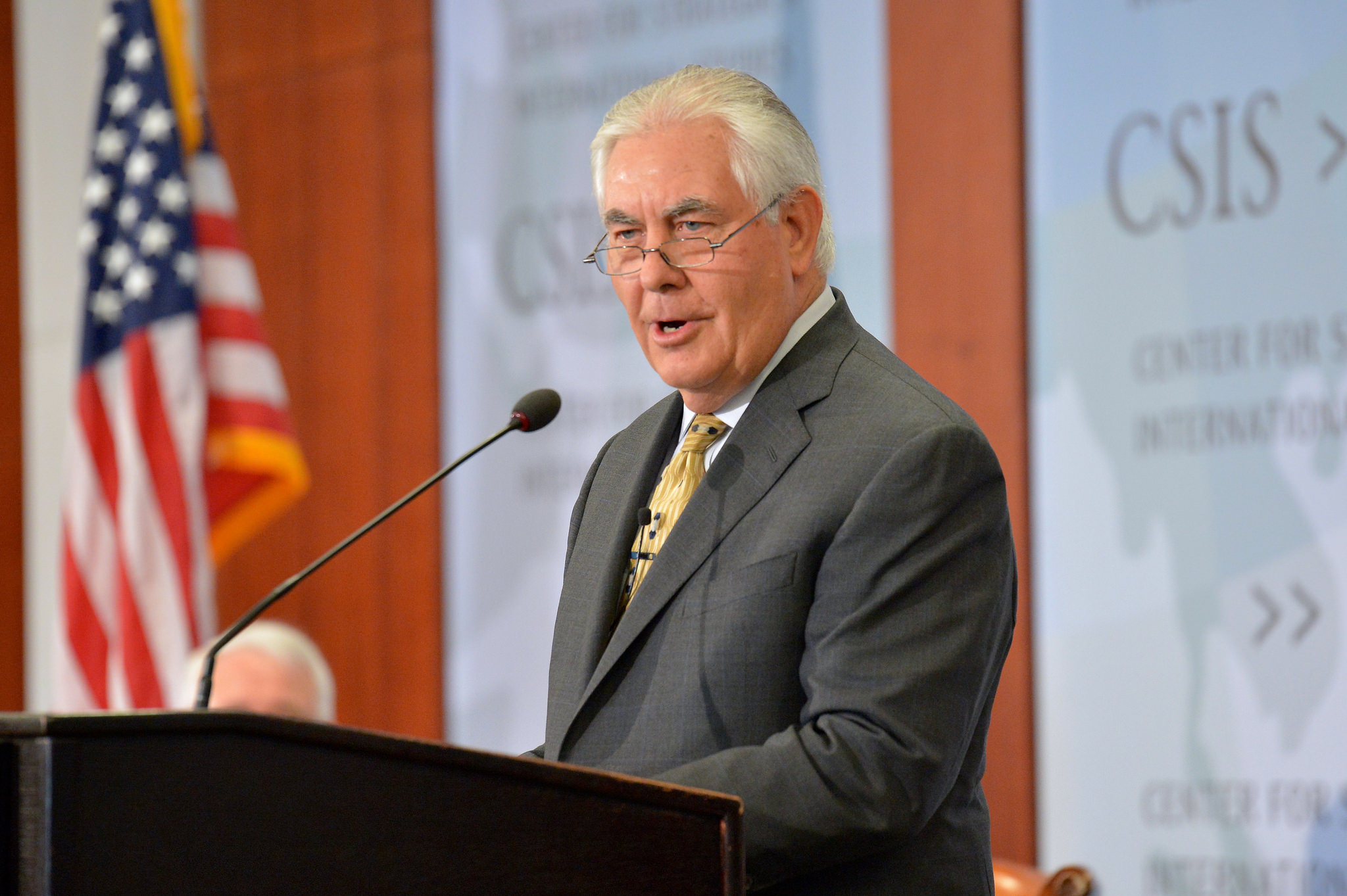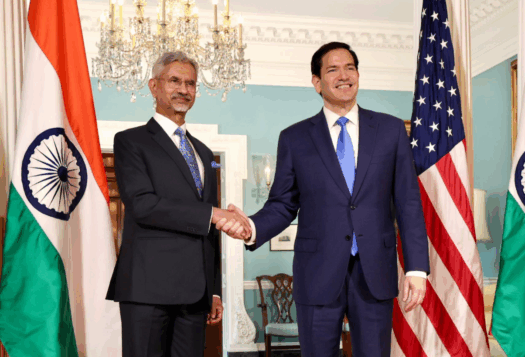
Last week, the U.S. government arguably removed any doubt about its preferred partner in South Asia. In a speech before the Washington, D.C.-based think tank, the Center for Strategic and International Studies, U.S. Secretary of State, Rex Tillerson, spoke of the significance of the U.S.-India partnership. In particular, Tillerson noted “President Trump and Prime Minister Modi are committed, more than any other leaders before them, to building an ambitious partnership.” With Tillerson’s three-day, inaugural visit to India beginning today, two key questions emerge regarding the implications of a U.S.-India partnership. First, have the United States and India truly forged an “all-weather” friendship? And second, how does America’s outreach to India affect regional security and the balance of power in South Asia?
An All-Weather Friendship?
In his speech, Tillerson noted the “growing strategic convergence” between the United States and India but have both countries established an “all-weather” partnership? Will American bonhomie towards India, which first came to prominence following the U.S.-India nuclear deal of 2008, continue into the Trump administration?
While expectations may be high following U.S. Defense Secretary Jim Mattis’ trip to India and Tillerson’s speech, Trump’s behavior in office suggests there are no certainties in U.S. foreign policy at the moment, including towards India. In terms of foreign policy decisions, Trump has held divergent views on the Iran deal, the Islamic State (IS), the North Atlantic Treaty Organization (NATO), and Russia, to name a few. Regarding the Iran deal, for example, Trump once stated that the United States would have to “live with it.” A year later, Trump publicly disavowed the deal in a move that could have negative consequences for India’s interests in Iran. Likewise, Trump called NATO “obsolete” in 2016 but later backtracked and declared the military alliance to be very important to him. In the light of these contradictions, at least during the Trump presidency, there is reason to doubt the stability of an all-weather Indo-U.S. partnership.
On the other hand, Trump’s inconsistencies do not necessarily imply the U.S.-India relationship is in for a topsy-turvy ride. In recent years, India has enjoyed support from Democratic and Republican presidents as well as bipartisan support from the U.S. Congress. From the United States’ support for India’s bid to join the Nuclear Supplier’s Group to defense contracts worth $15 billion since 2008, India seems to be one of only a handful of issues both major U.S. political parties agree on. Yet, given the unprecedented foreign policy uncertainty coming from the White House, India should factor such considerations into its next moves.

Perhaps further hindering the stability of an all-weather partnership is the transactional nature of U.S.-India relations. For the United States, the overriding raison d’être of the U.S.-India partnership is about containing China. Despite the argument that the Indo-U.S. partnership is based on shared, democratic values, the relationship would likely not be as prominent without the driving threat of balancing China. As such, U.S. foreign policy is about long-term strategic interests and India should understand this fact. Tillerson hinted at the underlying motives for Indo-U.S. relations when he said, “we need to collaborate with India to ensure that the Indo-Pacific is increasingly a place of peace, stability, and growing prosperity – so that it does not become a region of disorder, conflict, and predatory economics,” the latter charge a clear knock at China’s investments in the region.
While India-China relations are currently at a low point, if both countries were to settle their differences, the strategic partnership between the United States and India would likely cease to be as prominent. Importantly, a positive turn in India-China relations is not out of the question given both countries interactions in the BRICS forum and India’s full membership in the Shanghai Cooperation Organization.
Worsening Regional Dynamics
Apart from Trump’s inconsistencies, the Indo-U.S. partnership would have important implications for regional dynamics in South Asia. The international community is growing increasingly multi-polar after several decades in a unipolar system following the end of the Cold War. As such, India should be wary of placing all of its eggs in America’s basket. The United States’ increasingly explicit inclination towards India has already raised eyebrows in Beijing and Islamabad, and these insecurities will only continue to grow as the Indo-U.S. partnership advances. If unchecked through dialogue, transparency, and confidence-building measures, these insecurities could further deteriorate India’s relations with its two largest neighbors and accelerate a conventional and nuclear arms race. There are already some indications of this trend. In September, for example, Indian Army Chief Bipin Rawat warned that India should be prepared for the possibility of a two-front war with China and Pakistan.
The concerns above are largely based on conventional and nuclear warfare patterns. However, even if future conflicts in South Asia align with the concept of the “fifth generation of war,” in which digital networks and non-state actors play a larger role as opposed to traditional, conventional attacks, India’s position is still vulnerable due to poor relations with China and Pakistan. From a purely warfighting perspective, alienating China to embrace the United States may not prove the most judicious decision for India in the years ahead.
As such, India should use the opportunity of Tillerson’s trip to advance a robust partnership with the United States but remain cognizant of the political and geopolitical constraints on this relationship. While the Secretary may have termed the Indo-U.S. partnership a “profound transformation…that will have far-reaching implications for the next 100 years,” India would be wise to take stock of both the Trump administration’s unpredictability and India’s long-term need for stability in its region should it want to reach its foreign policy and domestic development goals.
***
Editor’s Note: Click here to read this article in Hindi
Image 1: The White House via Flickr.
Image 2: U.S. Department of State via Flickr.


